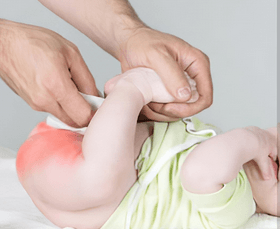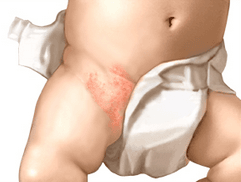

Side Effects of Diapers for Babies: What Every Parent Should Know
Diapers are one of the most convenient inventions for parents worldwide. They make life easier by keeping babies dry and clean, especially during outings or nighttime. However, while diapers are a great help, they are not without their downsides. Understanding the potential side effects of diapers can help parents make informed decisions for their baby’s health and comfort.
In this blog, we’ll explore the common and lesser-known side effects of using diapers, along with tips to minimize these risks. Let’s dive in!
1. Diaper Rash
Diaper rash is one of the most common issues babies face when using diapers. This condition appears as red, inflamed skin around the diaper area. The main causes of diaper rash include:
- Prolonged Wetness: Even the most absorbent diaper cannot completely prevent moisture from touching the baby’s skin.
- Friction: Constant rubbing between the diaper and sensitive skin can lead to irritation.
- Chemical Sensitivities: Some diapers contain fragrances, dyes, or chemicals that can irritate the skin.
Prevention Tips:
- Change diapers frequently, even if they don’t seem overly wet.
- Use a barrier cream or ointment containing zinc oxide.
- Opt for fragrance-free and hypoallergenic diapers.
2. Allergic Reactions
Some babies may develop allergic reactions to the materials in disposable diapers. The symptoms might include redness, swelling, or small bumps on the skin. Because these reactions can be triggered by:
- Dyes used to make diapers colorful.
- Fragrances added for odor control.
- Chemicals like chlorine or latex.
How to Minimize This Risk:
- Choose diapers labeled as “chemical-free” or “organic.”
- Test a new brand of diapers on a small patch of skin before regular use.
- Switch to cloth diapers if disposable ones cause recurring issues.
3. Overheating in the Diaper Area
Diapers, especially disposable ones, can create a warm and humid environment. This warmth can make the baby’s diaper area uncomfortable and increase the risk of fungal or bacterial infections. Overheating is more common in warm climates or during hot weather.
Solution:
- Allow your baby some diaper-free time each day to air out the area.
- Use breathable diapers that allow air circulation.
- Ensure the room temperature is comfortable for your baby.
4. Limited Mobility
Some parents notice that bulky diapers can slightly restrict a baby’s movements. This might affect how they crawl, walk, or sit comfortably. While this effect is temporary, it’s worth considering.
What You Can Do:
- Use diapers that are the right size and fit snugly without being tight.
- Avoid over-layering clothing when your baby is already wearing a diaper.
- Let your baby go diaper-free during playtime to encourage natural movement.
5. Environmental Concerns and Long-Term Health Effects
Disposable diapers contribute significantly to environmental waste. Apart from that, the chemicals used in some diapers, such as dioxins or phthalates, have raised concerns about long-term exposure. Although, research is ongoing, it’s wise to err on the side of caution.
Eco-Friendly Alternatives:
- Consider cloth diapers, which are reusable and gentler on the environment.
- Look for eco-friendly disposable diapers made from sustainable materials.
- Dispose of diapers responsibly to reduce environmental impact.
6. Urinary Tract Infections (UTIs)
Prolonged use of wet diapers can increase the risk of urinary tract infections, especially in female babies. Although, bacteria from the stool can sometimes travel to the urinary tract if the diaper is not changed promptly.
Prevention:
- Always change a dirty diaper immediately.
- Clean your baby’s diaper area gently but thoroughly, wiping from front to back.
- Ensure that your baby’s diaper fits well without being too tight.
7. Delayed Potty Training
Constant use of diapers can make it harder for babies to recognize when they need to use the bathroom. However, this delay in awareness can extend the time it takes for a child to learn potty training.
How to Encourage Potty Training:
- Gradually reduce diaper use as your baby grows older.
- Introduce training pants as a transition between diapers and underwear.
- Offer positive reinforcement during potty training efforts.
8. Skin Dryness or Chafing
Some diapers wick away moisture so effectively that they can leave the baby’s skin excessively dry. Dryness, combined with friction from the diaper, may lead to chafing.
Simple Fixes:
- Apply a baby-safe moisturizer or diaper cream regularly.
- Use diapers with a soft inner lining to reduce friction.
- Allow your baby’s skin to rest by giving diaper-free time.
9. Risk of Fungal Infections
The warm, damp environment inside a diaper is the perfect breeding ground for fungi like Candida. Diaper-related fungal infections often appear as red, shiny patches of skin.
Tips to Prevent Fungal Infections:
- Keep the diaper area dry and clean.
- Use antifungal creams prescribed by a pediatrician if infections occur.
- Allow airflow by choosing diapers designed for breathability.
10. Waste Disposal Issues
Apart from health concerns, the environmental impact of diapers is significant. Disposable diapers take hundreds of years to decompose, adding to landfill waste.
Sustainable Options:
- Use biodegradable diapers made from natural fibers.
- Mix disposable and cloth diapers to strike a balance.
- Support brands that practice sustainable manufacturing.
11. Financial Strain
Although not a direct health concern, the cost of diapers can add up quickly, especially during the first few years of a baby’s life. This can create financial stress for some families.
Money-Saving Tips:
- Buy diapers in bulk to save money.
- Consider cloth diapers as a cost-effective alternative.
- Look for coupons, discounts, or diaper subscription services.
12. Parental Stress
Constant diaper changes, rashes, and finding the right product can become a source of stress for parents. It’s essential to remember that parenting is a journey, and every challenge has a solution.
Self-Care for Parents:
- Seek support from other parents or online communities.
- Share diaper duties with your partner or caregivers.
- Remember to take breaks and focus on your well-being.
Balancing Convenience and Care
While diapers are a modern convenience, their side effects highlight the importance of mindful usage. Here are some general tips to ensure your baby’s comfort and health:
- Rotate Between Diaper-Free Time and Diaper Use: Give your baby’s skin time to breathe by leaving them diaper-free for short periods daily.
- Choose the Right Type of Diaper: Experiment with different brands or types of diapers (cloth, organic, or eco-friendly) to find what works best for your baby.
- Monitor Skin Changes: Regularly check your baby’s skin for redness, rashes, or any signs of discomfort. Early detection is key to addressing issues.
- Practice Proper Hygiene: Clean your baby’s diaper area gently but thoroughly, and always dry it before putting on a fresh diaper.
- Stay Informed: Keep up-to-date with the latest research and recommendations on baby products to make informed choices.
Final Thoughts
However, diapers are a staple in modern parenting, offering convenience and practicality. However, like any product, they come with potential side effects that parents need to be aware of. By taking simple preventive measures and staying attentive to your baby’s needs, you can minimize these risks and ensure your baby stays happy and healthy.
Remember, every baby is unique, and what works for one might not work for another. Stay patient, observe your baby’s reactions, and make adjustments as needed. After all, your baby’s well-being is what matters most. You can also try baby moisturizers cream. However, you can try baby pants.
Pingback: Ultimate Guide to Treating Diaper Rash in Babies and Infants
whoah this blog is wonderful i love reading your articles. Keep up the good work! You know, a lot of people are looking around for this information, you could help them greatly.